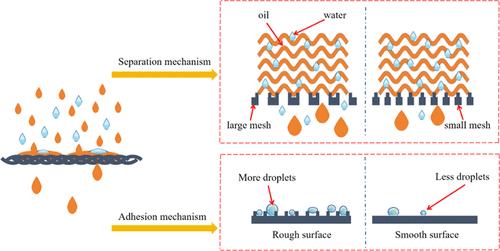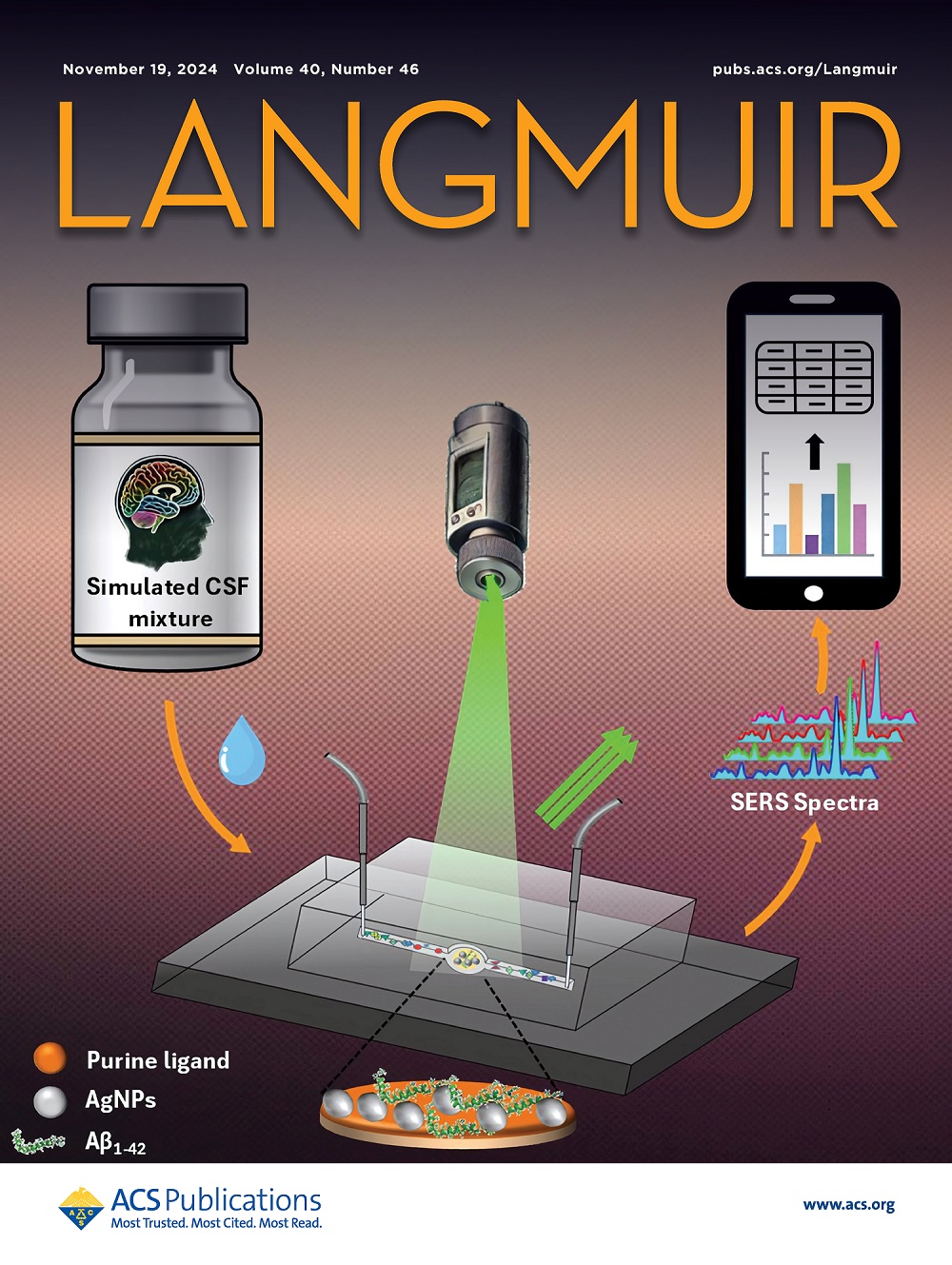Research into the Influence of Filtration Media Microstructure on Oil–Water Separation Performance
IF 3.7
2区 化学
Q2 CHEMISTRY, MULTIDISCIPLINARY
引用次数: 0
Abstract
Oil–water separation materials with specialized wettability have garnered significant attention in the field of oil–water separation due to the advantages of simple use and no secondary pollution. However, the adsorptive contamination of the filter surface by impurity phases and surfactants can cause a shift in the wettability of the filter surface. For efficient oil–water separation and improved resistance to adherent contamination on the oil–water separation membrane surface, herein, superwetted Cu nanofilms and smooth hydrophobic surfaces were prepared on SSM substrates by one-step electrodeposition and immersion methods, respectively. For water-in-oil/oil-in-water emulsions, nano-Cu has high separation efficiency. Experimentally, it was analyzed that the smaller spacing between the pores of the mesh membrane and the micro-nanostructures makes the separation effect better, but the flux will be reduced accordingly. By studying the separation images during the actual separation process through optical microscopy, it was found that the increase in the efficiency of the mesh membrane during the oil–water separation process and the decrease in the flux were due to the impurity phases aggregating and clogging the pores during the separation process to achieve a reduction in the pore size and the spacing of the micro-nanostructures. And further verification of the stability and mechanism correctness of the nano-Cu mesh film was conducted using cyclic experiments. The surface adhesion mechanism of filtration materials was analyzed by studying the phenomenon of water droplet adhesion on different mesh membranes and the ratio of adhesion. The research findings provide a comprehensive analysis of oil–water separation materials, focusing on both separation effectiveness and antiadhesion properties. This study offers new insights into the design of efficient oil–water separation materials and holds significant implications for advancing the practical application of oil–water separation membranes.

过滤介质微观结构对油水分离性能影响的研究
具有特殊润湿性的油水分离材料因其使用简单、无二次污染等优点,在油水分离领域备受关注。然而,杂质相和表面活性剂对过滤器表面的吸附污染会引起过滤器表面润湿性的变化。为了实现油水分离膜的高效分离,提高油水分离膜表面的抗附着物污染能力,本文分别采用一步电沉积法和浸渍法在SSM基底上制备了超湿Cu纳米膜和光滑疏水表面。对于油包水/油包水乳液,纳米cu具有较高的分离效率。实验分析,网状膜孔与微纳结构之间的间距越小,分离效果越好,但通量会相应降低。通过光学显微镜对实际分离过程中的分离图像进行研究,发现油水分离过程中网状膜效率的提高和通量的降低是由于杂质相在分离过程中聚集并堵塞了孔隙,从而减小了孔隙尺寸和微纳结构的间距。并通过循环实验进一步验证了纳米铜网膜的稳定性和机理的正确性。通过研究水滴在不同网膜上的粘附现象及粘附比,分析了过滤材料的表面粘附机理。研究结果对油水分离材料进行了全面的分析,重点关注分离效果和抗粘附性能。本研究为高效油水分离材料的设计提供了新的思路,对推进油水分离膜的实际应用具有重要意义。
本文章由计算机程序翻译,如有差异,请以英文原文为准。
求助全文
约1分钟内获得全文
求助全文
来源期刊

Langmuir
化学-材料科学:综合
CiteScore
6.50
自引率
10.30%
发文量
1464
审稿时长
2.1 months
期刊介绍:
Langmuir is an interdisciplinary journal publishing articles in the following subject categories:
Colloids: surfactants and self-assembly, dispersions, emulsions, foams
Interfaces: adsorption, reactions, films, forces
Biological Interfaces: biocolloids, biomolecular and biomimetic materials
Materials: nano- and mesostructured materials, polymers, gels, liquid crystals
Electrochemistry: interfacial charge transfer, charge transport, electrocatalysis, electrokinetic phenomena, bioelectrochemistry
Devices and Applications: sensors, fluidics, patterning, catalysis, photonic crystals
However, when high-impact, original work is submitted that does not fit within the above categories, decisions to accept or decline such papers will be based on one criteria: What Would Irving Do?
Langmuir ranks #2 in citations out of 136 journals in the category of Physical Chemistry with 113,157 total citations. The journal received an Impact Factor of 4.384*.
This journal is also indexed in the categories of Materials Science (ranked #1) and Multidisciplinary Chemistry (ranked #5).
 求助内容:
求助内容: 应助结果提醒方式:
应助结果提醒方式:


